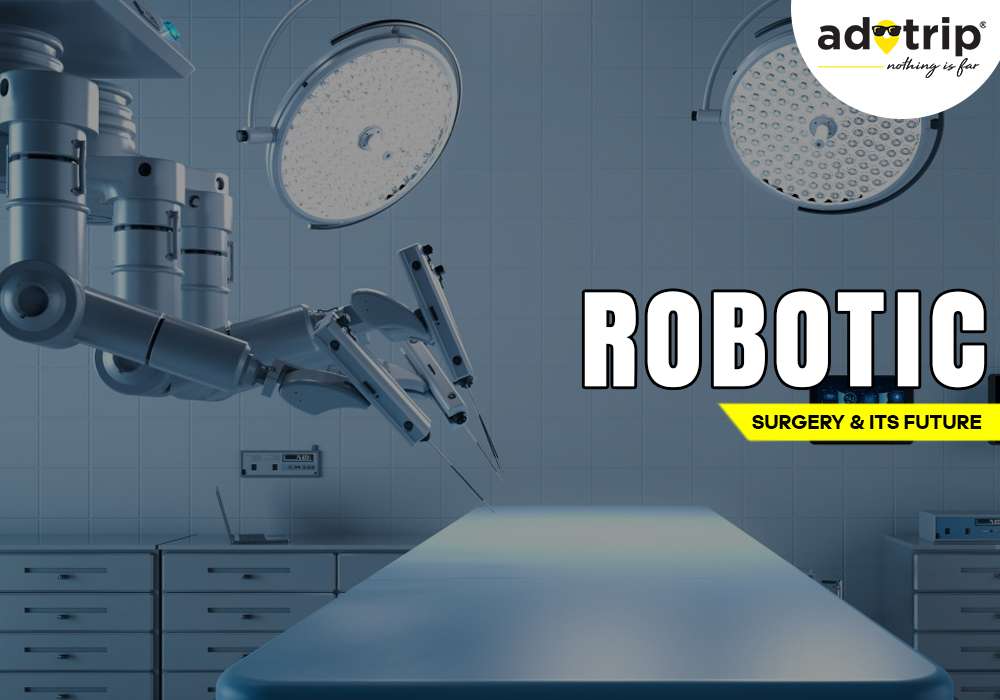
Robotic surgery has come a long way since its introduction in the 1980s. Medical professionals use surgical robots in various medical procedures today, ranging from cardiac surgeries to neurosurgeries. As technology advances, the future of robotic surgery looks promising.
Robotic surgery is a minimally invasive surgical procedure that involves using advanced robotic systems to perform surgical operations. This type of surgery is also commonly known as robot or computer-assisted surgery.
Robotic surgery differs from traditional surgery, involving advanced computer technology and robotic systems to aid the surgical process. The surgeon controls the robotic system, translating their movements into precise, controlled movements of surgical instruments.
During the initial years, the technology was experimental, and developers created the first robotic surgical systems for military use.
It was in the late 1990s that the first robotic surgery was performed on a human patient using the da Vinci Surgical System. Developed by Intuitive Surgical, the da Vinci System revolutionised the field of robotic surgery by providing surgeons with a high degree of precision and control during surgical procedures.
Since the introduction of the da Vinci System, there have been many advancements in robotic surgery. One significant development has been the ability to perform procedures with even greater precision and accuracy using microscopic robotic systems.
With fast-paced advancements in this field, robotic surgery will continue to play an increasingly important role, offering new possibilities for patients and surgeons alike.
Advancements in robotic surgery have opened up a world of new possibilities in medicine. One of the critical areas of development has been the integration of robotics and artificial intelligence.
By combining advanced robotics with cutting-edge AI technology, surgeons can perform procedures with even greater precision and accuracy. Robotic surgery has facilitated a more personalised approach to surgical procedures, customised to meet the specific requirements of each patient. The latest robotic systems offer high precision, accuracy, and control, allowing surgeons to perform procedures efficiently.
One of the significant benefits of robotic surgery is its ability to reduce the risk of complications and improve patient outcomes. Robotic systems can minimise the chances of human error, ensuring that surgeries with high accuracy and safety.
In addition to these advancements, many new and emerging technologies are changing the landscape of robotic surgery. For example, augmented and virtual reality technology allows surgeons to perform procedures with even greater precision and control.
Robotic surgery is utilised in various medical fields and has many applications. Some critical areas which have robotic surgery implementation:
Cardiac Surgery:
Benefits of robotic cardiac surgery:
Benefits of robotic neurological surgery:
Benefits of robotic gastrointestinal surgery:
Benefits of robotic urological surgery:
Benefits of Robotic Gynaecological Surgery
The high cost of robotic surgery:
In conclusion, robotic surgery is rapidly advancing. Overall, the future of robotic surgery is bright, and we can expect to see many more exciting advancements and applications in the years to come.
India has made rapid strides in the field of robotic surgery. A lot of complicated health issues are being taken care of with robotic surgery. Adotrip, a prominent health tourism company, ensures hassle-free treatment in India. From flight bookings to hotel stays, medical visa assistance to doctors’ tie-up, we help at every stage of the trip.
Look forward to hassle-free treatment in India because
With us, nothing is far!
Ques 1. How does Robotic surgery work?
Ans 1. Robotic surgery is a minimally invasive surgical procedure in which a surgeon operates through a computer-controlled robot. The surgeon uses a console with a 3D high-definition view of the surgical area and controls the robotic arms that hold the surgical instruments. The robot translates the surgeon's movements into precise movements of the instruments.
Ques 2. What are the advantages of robotic surgery over traditional surgery?
Ans 2. Robotic surgery offers several advantages over traditional surgery, including:
Ques 3. What are the applications of robotic surgery?
Ans 3. Robotic surgery has an implementation in a variety of medical specialities, including:
Ques 4. What are the challenges and limitations of robotic surgery?
Ans 4. Some of the challenges and limitations of robotic surgery include the following:
Ques 5. Can anyone undergo robotic surgery?
Ans 5. Only some people are candidates for robotic surgery. Factors such as the type and severity of the condition, the patient's overall health, and the surgeon's experience may all be considered when determining whether the patient is suitable for robotic surgery. Also, candidates who have not had a lot of abdominal surgeries can undergo robotic surgery.
Ques 6. Does insurance cover robotic surgery?
Ans 6. Insurance typically covers robotic surgery in many cases. However, the coverage may vary depending on the patient's insurance plan and procedure.
Ques 7. What is the recovery time from robotic surgery?
Ans 7. Recovery time can vary depending on the type of procedure performed and the patient's overall health. However, in general, patients who undergo robotic surgery can expect a faster recovery time than those who undergo traditional surgery.
Ques 8. What are the risks associated with robotic surgery?
Ans 8. Risks associated with robotic surgery include infection, bleeding, damage to surrounding tissues, and anaesthesia-related complications. Patients need to discuss the risks and benefits of robotic surgery with their healthcare provider before deciding to undergo the procedure.
References




